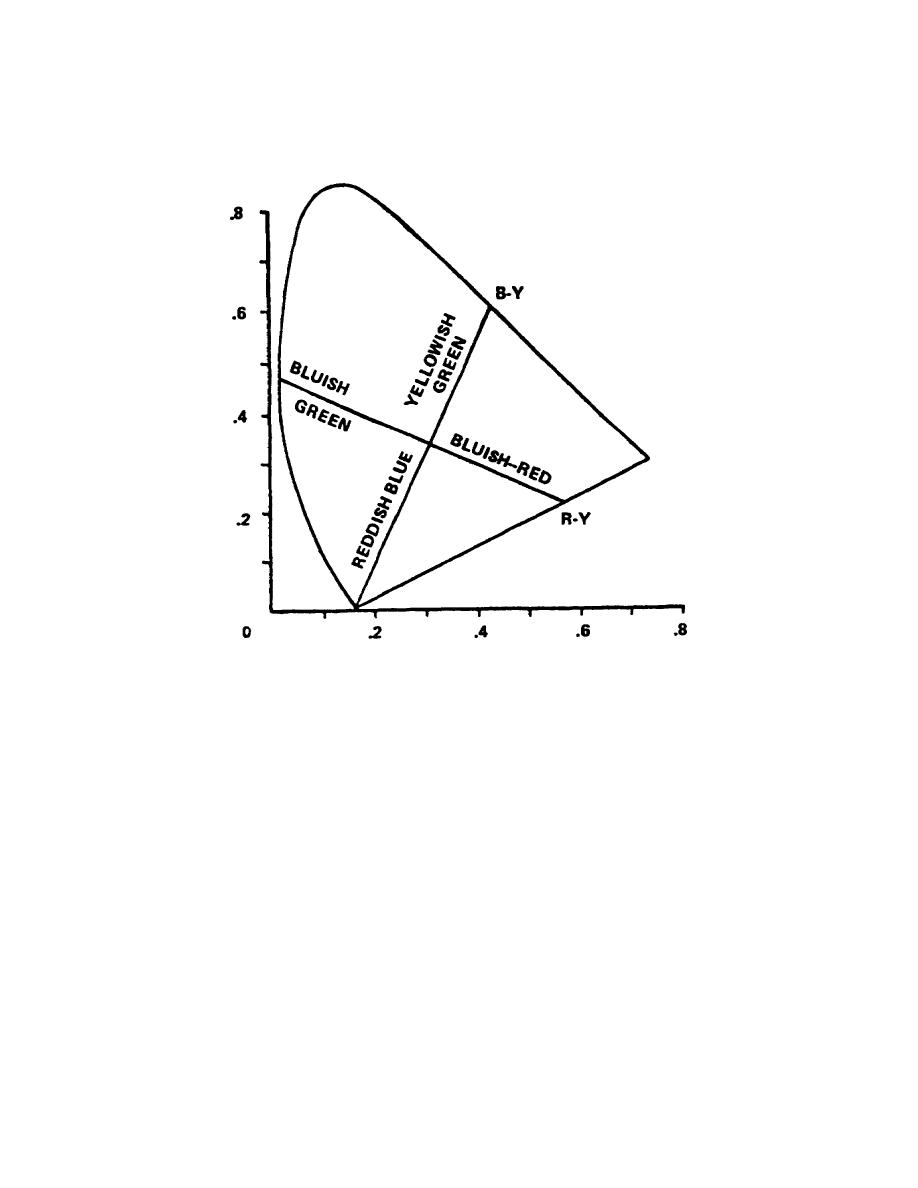
Although this would extend the color definition to possibly 1.5 MHz, it is
practical to transmit only one of the chrominance signals vestigially. One of the
color difference signals would then extend from 0 to 1.5 MHz, while the other color
difference would be limited from 0 to 0.5 MHz.
Figure 1-17.
R-Y and B-Y chromaticity coordinates
8. Color difference signals.
The color difference signals are the signals which
can be produced by subtracting the Y signal from each color camera signal.
For
example, the Y signal is inverted so that all values are negative (-30R, -59G, -
11B).
This is algebraically added to each camera tube output in turn, producing
three chrominance signals, R-Y, G-Y, and B-Y.
Only two color difference signals
plus the Y signal need to be transmitted to reproduce the color elements of any
televised scene.
One of the color difference signals may be developed in the
receiver, since any two color difference signals contain all the necessary color
information. Thus, only the R-Y and the B-Y signals need to be transmitted.
a. It should be noted that if R-Y were the extended sideband, fine detail would
appear as either a bluish-red (magenta) or a bluish-green (cyan).
On the other
hand, if B-Y were the extended sideband, only reddish-green or yellow-green colors
would be produced (fig 1-17).
b. Fine color detail is represented accurately to the eye by orange or cyan for
any color.
If this principle were to be used by R-Y and B-Y transmission
standards, it would still be necessary to transmit extended sidebands of both color
difference signals, since both are necessary to reproduce either cyan or orange.
19



 Previous Page
Previous Page
